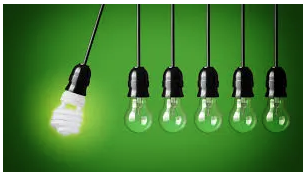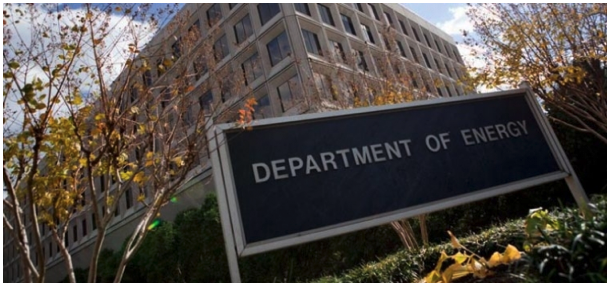Proposed Changes to Energy Conservation Standards Program for Appliances
When the Trump administration took office almost a year ago, one oft repeated promise was to remove and reduce regulations across the board– though environmental and energy regulations were frequently called out specifically. Whether it was in an attempt to boost American oil and coal industries or make complying with environmental regulations for facilities in the United States cheaper, the stated goal was always to prop up a situation that would put ‘America first.’
In recent weeks, the U.S. Department of Energy (DOE) has started down a new path of cutting on regulation in the same intended vein. Specifically, DOE has signaled changes to come to the energy conservation standards program for appliances and other commercial and industrial products (otherwise known as the Appliance and Equipment Standards Program). What is the energy conservation program for appliances? What changes are being discussed? And how are energy advocacy groups responding? Keep reading to find out.
Background of Appliance and Equipment Standards Program
In its current form, the Appliance and Equipment Standards Program is mandated by the Energy Policy Conservation Act (EPCA), which requires DOE to set minimum energy conservation standards for over 60 consumer, commercial, and industrial products. Based on the standards that are set, companies must use the official test procedures (also established by DOE through formal rulemaking process) to test and certify that their products meet the minimum efficiency standards, while facing monetary punishments for every product knowingly shipped in violation of requirements. Not only that, but EPCA requires DOE to review the energy conservation standards and testing procedures for each of the applicable products every six years, surveying if and how the technology and market has changed, to determine if more stringent energy efficiency requirements are warranted (through its anti-backsliding provision, EPCA prevents DOE from walking back a future efficiency standard to be less stringent than one previously established). Also note that through this six-year review process, one of DOE’s possible (and not entirely uncommon) outcomes can be that the review is completed and the analysis dictates that more stringent standards are not feasible (whether it be because of an undue burden it would place on manufacturers, the lack of technological feasibility, the failure of potential standards to help consumers, etc.).
Source: U.S. Department of Energy
These appliance and equipment energy standards were a hallmark of the Obama administration’s energy policy, having successfully implemented over 50 standards to save American household’s energy and also as a means towards reducing carbon emissions by at least 3 billion metric tons by 2030. Overall, the program as a whole has accounted for nearly $2 trillion in savings on American utility bills since inception in 1987. However as a part of the Trump administration’s efforts to roll back regulations across the board, energy efficiency standards have found themselves in the cross-hairs. Such efforts began early in the Trump presidency as several conservation standards that were pushed to completion in the last days of the Obama administration were subsequently put on hold and not published after Trump took office, while the DOE Secretary has identified the energy conservation program as ‘overly burdensome’ and ripe for reconsideration.
Impending changes
Starting at the end of November 2017, DOE began publicly weighing a complete overhaul of its Appliance and Equipment Standards Program. These changes would be the first significant reexamination of the DOE energy conservation standards program since the modern version of the law came to be in 1987, with the main stated goal of these changes being to allow for more flexibility.
Requests for Information
The first signal of these changes came in a Request for Information (RFI), wherein DOE proposed making these appliance standards more similar to corporate average fuel efficiency (CAFE) standards for motor vehicles. In these CAFE standards, car manufacturers can produce cars that fail to meet the set efficiency standards as long as the manufacturer also sells enough products that exceed the standards such that the average efficiency of the fleet meets the standards. Such a system is in contrast to the existing Appliance and Equipment Standards Program that requires all products to meet the mandatory levels. The RFI text states that ‘market-based policy mechanisms are potentially less burdensome alternatives as they use markets, price and other economic variables to provide incentives for regulated entities to reduce or eliminate negative environmental externalities in a least cost way.’ In addition to the option to average out product efficiency, this RFI also suggests such approaches as efficiency credit trading between manufacturers and ‘feebates’ that reward energy-efficient practices and penalize the failure to adhere to such practices.
As this first step in the rulemaking process (read about how the entire federal rulemaking process works here), DOE is soliciting feedback on how previously described market-oriented mechanisms, in contrast to the long-standing existing structure of the standards program, might be applied to the energy appliance standards program and how such programs have been successful elsewhere.
DOE also issued a second RFI later the same week as the first RFI to request feedback on its ongoing efforts to redesign the energy conservation standards program, specifically regarding the test procedures used to assess compliance with standards and the process used to establish standards. The proposed changes in this second RFI would be to allow establishing energy conservation standards through a quicker process of a negotiated rulemaking (which brings stakeholders in to essentially hammer out the standards with DOE, as opposed to the more extensive public back and forth from the existing rulemaking process), to establish additional means to solicit manufacturer feedback before a rulemaking process formally begins, using established industry standards for compliance testing (instead of continuing to set them through federal regulatory process), and requiring test procedures to be issued prior to the issuance of energy conservation standards.
Deferred action
In addition to the two RFIs, the Trump administration indefinitely deferred action on 20 appliance and equipment standards for household products (e.g., washing machines, refrigerators, and pool heaters) that are by law overdue for their updated review. While not subject to specific fanfare and announcement from the administration, this deferred action was signaled through changes to the Regulatory Agenda, removing the final action time for these 20 standards and placing them under the ‘long-term action’ label, meaning there is no expected regulatory action for these products over the next year.
Source: VOA News
As an example, energy efficiency standards for commercial water heaters were proposed in 2016, with the legal deadline for a final rule (declaring whether more stringent standards for this product were warranted and, if so, what those standards would be) coming two years after the proposal. However those two years would pass as of May 2018, and since they are under the ‘long-term action’ umbrella, no action on them would occur at least until 2019 and the legal and statutory deadlines will be missed. This situation is similar for all 20 of the appliance and equipment standards that were placed under such deferred action, despite them all being marked as ‘under review’ during the regulatory agenda this past spring.
What is noteworthy about such a move is that, as previously stated, the six-year review for all standards can (and sometimes do) result in an analytical decision that more stringent energy efficiency standards are not warranted at a particular time. However, such decisions are rooted in extensive technological and market analysis, feedback from manufacturers and advocacy groups, and multiple series of proposals and reviews before a final decision is made (as is customary in the federal rulemaking process). But by choosing instead to not open up these standards for review, the measured analysis and thorough debate are prevented from even taking place on potential standards.
Response from energy advocates
In response to these proposed and impending alterations to how the appliance efficiency standards are set and regulated, a number of energy and environmental advocacy groups have made public statements about the effect they would have on future policy and American consumers.
Requests for information
An energy policy advocate at the Natural Resources Defense Council (NRDC) speculated that the proposed change to a CAFE-like standards program could lead to a dramatic reduction in American energy savings, while noting that the efficiency standards programmust ‘be considered from the perspective of the consumers’ and that the ‘trading mechanisms DOE has proposed could lead to market confusion.’ A key difference between appliances and the automobile industry is that there are only a handful of very sophisticated car makers, whereas appliances have hundreds of manufacturers of all sizes and levels of energy expertise. The minimum efficiencies serve to protect consumers in situations where two products might look similar from the outside, but the energy use is vastly different due to the difference in manufacturer priorities and abilities. Further, the law behind the appliance standards mandates that standards are set at the ‘highest level that is technologically feasible and economically justified,’ not averaged across a suite of products. Adding in discussion of changing the process to set standards, NRDC also notes that the existing standards program is working well and has been for the 30 years of its existence. The desire to change it now, when nothing is broken, could ultimately do more harm than good and take away from the program that is currently working due to it being ‘straightforward, transparent, and easy for consumers to understand.’
Source: New York Times
With regard to a shift to a CAFE-like system, a representative of the Appliance Standards Awareness Project (ASAP) expressed concern that such a switch would make the program more complex and difficult to follow, while ultimately opening it up for companies to game the system instead of the current system that puts the onus on the manufacturer to help the consumer save energy. The ASAP representative did, however, commend DOE for looking for ways to improve the Appliance and Equipment Standards Program instead of scrapping it completely and was reassured that the anti-backsliding provision would be effective in making sure existing standards never get weakened.
Deferred action
In its year-end review of energy policy, the NRDC identified the deferred action on the appliance standards as illegal based on the established statutory law, lamenting that in the end it is the American consumers who suffer. NRDC points out how essential such standards are and how important it is that they are reviewed and updated, as many products appear identical from the outside and standards ensure that consumers are getting a minimal level of efficiency. Looking at it economically, NRDC notes that standards implemented through 2016 save the average household $500 per year, while the continued implementation of the legally required standards (and improvements upon those standards) stand to save the country a cumulative $43 billion by 2035– but those savings are threatened if the deferred action continues. NRDC’s position is that all regulations are required by statute to be updated, and the “Trump DOE doesn’t get to pick and choose when to follow the law.”
Similarly, ASAP has noted that this deferred action is DOE indicating its intent to not follow the law, saying “I’ve never seen this before. They’re publishing a plan that flaunts the law. It’s a public plan basically thumbing its nose at congressional deadlines.” ASAP noted that while previous administrations, such as under George W. Bush, missed certain efficiency standard review deadlines, those administrations always appeared to be trying to complete its review and never punted on doing them at all as the Trump administration appears to be.
Lastly, ASAP and the American Council for an Energy-Efficient Economy (ACEEE) put out a joint statement in response to the deferred action, noting that by “deciding not to honor statutory deadlines for these standards, DOE is jeopardizing billions of dollars in savings for American families and businesses, while also creating uncertainty for manufacturers and markets.” ASAP and ACEEE urge DOE to fulfill their statutory and legal obligations in continuing to review and update energy efficiency standards at the regulatory mandated six year intervals.
Next steps
With respect to deferred action, if these standards continue to be shelved against the legal requirements of EPCA, then organizations like NRDC will likely sue, as they’ve already done for several standards that were completed during the Obama administration but the Trump administration has failed to make official by publication in the Federal Register.
Regarding the two RFIs, comments are being accepted through February 16, 2018. While the previously noted press releases from advocacy groups will surely be repeated by those groups in public comment on record to the RFI docket, as well as additional comments from other groups and manufacturers, if these issues are important to you then be sure to submit a comment expressing your viewpoint as a concerned citizen (and consult this post on advice on how to make sure your public comment is read seriously and creates as much influence and impact as possible). In addition, DOE is hosting a public meeting for discussion of these RFIs with all interested stakeholders on January 9, 2018. These public meetings are opportunities for manufacturers, energy advocates, or any other interested parties to give feedback to DOE on the topics discussed in the RFIs. For more information on how to submit comments and about the public meeting, see the official RFI publication in the Federal Register.
If you enjoyed this post and you would like to get the newest posts from the Chester Energy and Policy blog delivered straight to your inbox, please consider subscribing today.
For some additional takes on energy policy decisions proposed by the Trump administration, please see other blog posts on the changes to the opening the Alaska National Wildlife Reserve for drilling , the push for ‘clean coal,’ and the decision to sell off large portions of the Strategic Petroleum Reserve.
Sources and additional reading
Agency floats overhaul of energy efficiency standards: EE News
Changes to the Standards Program: More Harm than Good? NRDC
Department of Energy Solicits Comments on a Major Rest of its Appliance Standards Program: Lexology
Defending Efficiency Standards: 2017 In Review: NRDC
DOE mulls changes to appliance efficiency program: Utility Dive
Statement of ACEEE and ASAP on Federal Plans to Put Updates to Appliance Standards on Ice: ACEEE
The $2 Trillion Success Story: Energy Efficiency Standards: NRDC
Trump administration ignores legal mandates to update appliance efficiency standards: ThinkProgress




